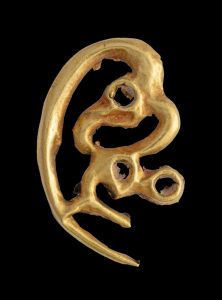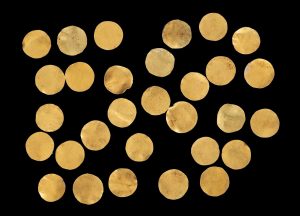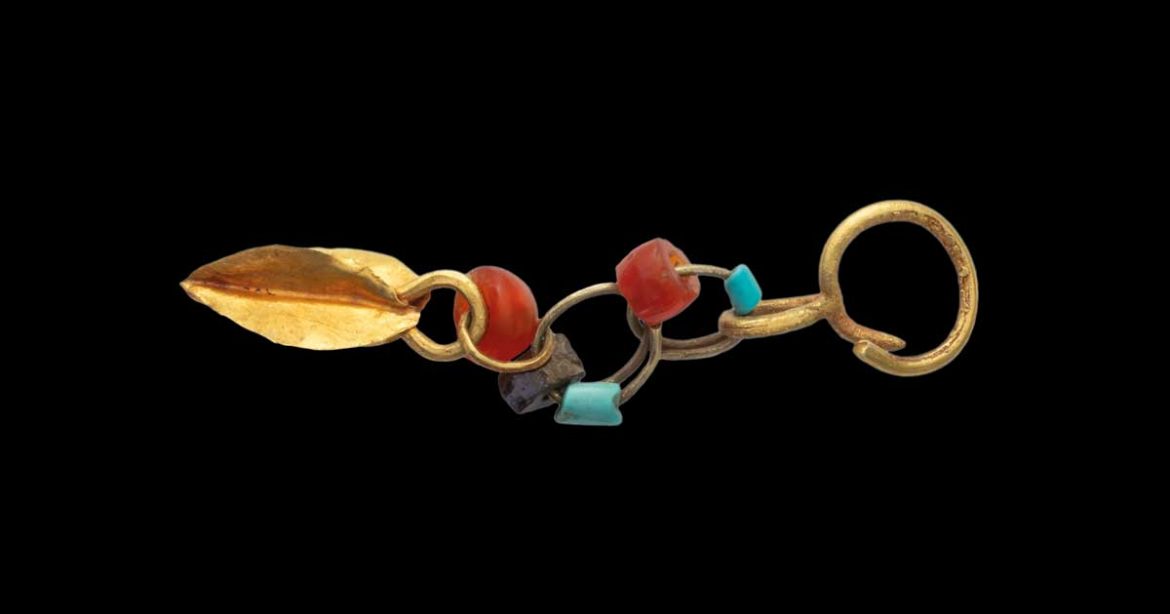Uncover the rich history of the Saka people at the Fitzwilliam Museum’s newest exhibition, Gold of the Great Steppe
Hundreds of recently discovered gold artefacts, dating back nearly 3,000 years, are now on display at the Fitzwilliam Museum, in what is a global first. The outstanding archaeological finds – uncovered from the extraordinary ancient burial mounds in East Kazakhstan built by the Saka people – offer a glimpse into a way of life that has been largely overlooked by museums in the west.
 The Saka culture of central Asia was one of the earliest expressions of the Scythian culture that was prevalent across the Eurasian Steppe, from the Black Sea to Siberia, and flourished from at least the eighth to the third centuries BCE. A vibrant society, the Saka of East Kazakhstan occupied a landscape of wide-open skies, rolling plains and soaring mountains. And – as can be seen in the exhibition – they were an exceptionally resilient bunch, determined to both protect and document their heritage.
The Saka culture of central Asia was one of the earliest expressions of the Scythian culture that was prevalent across the Eurasian Steppe, from the Black Sea to Siberia, and flourished from at least the eighth to the third centuries BCE. A vibrant society, the Saka of East Kazakhstan occupied a landscape of wide-open skies, rolling plains and soaring mountains. And – as can be seen in the exhibition – they were an exceptionally resilient bunch, determined to both protect and document their heritage.
The burial mounds from which the artefacts have been derived were huge architectural feats of ambitious technological construction, dominating the landscape. Elite members of society were buried with their horses and many precious gold objects. However, status seems to have been afforded based on family ties; noble youths were afforded expensive burials, and teenagers were buried as warriors.
One highlight of the exhibition is the spectacular contents from an extremely rare, undisturbed Saka burial – only the second to be discovered on the territory of Kazakhstan. Buried in the same chamber as a younger, female close relative, the grave of a teenage archer – no older than 18 when he died – appears to have been protected from plunder by a rockfall, which shielded it from view. While the girl’s remains were heavily looted in antiquity, the boy’s richly furnished grave remained undisturbed for over 2,500 years.
 This fascinating and tender exhibition brings together archaeological finds and research from three different burial complexes in East Kazakhstan: Berel, Shilikti and Eleke Sazy, allowing visitors to discover the life and legacy of the Saka people, while exploring points of resonance with Kazakh culture today. It also represents the growing application of archaeological science that is currently driven by Kazakhstani researchers, and happens to mark the 30th anniversary of the independent Republic of Kazakhstan.
This fascinating and tender exhibition brings together archaeological finds and research from three different burial complexes in East Kazakhstan: Berel, Shilikti and Eleke Sazy, allowing visitors to discover the life and legacy of the Saka people, while exploring points of resonance with Kazakh culture today. It also represents the growing application of archaeological science that is currently driven by Kazakhstani researchers, and happens to mark the 30th anniversary of the independent Republic of Kazakhstan.
Luke Syson, director of the Fitzwilliam Museum, said: “We look forward to bringing the extraordinary culture of the Saka people to life for audiences, and are grateful to our partnership with East Kazakhstan, without which enlightening exhibitions such as these would simply not be possible.”
Going forward, the Fitzwilliam Museum will work in partnership with research scientists at the University of Cambridge’s McDonald Institute for Archaeological Research, utilising the latest non-invasive technology to uncover new secrets held by the artefacts. Results from the collaboration will be included both in the exhibition and digitally, as an ongoing legacy
of the research.
To book your timed ticket for Gold of the Great Steppe, visit the Fitzwilliam Museum website. The display will be running until 30 January 2022.
Click here to read our previous article on the exhibition.

